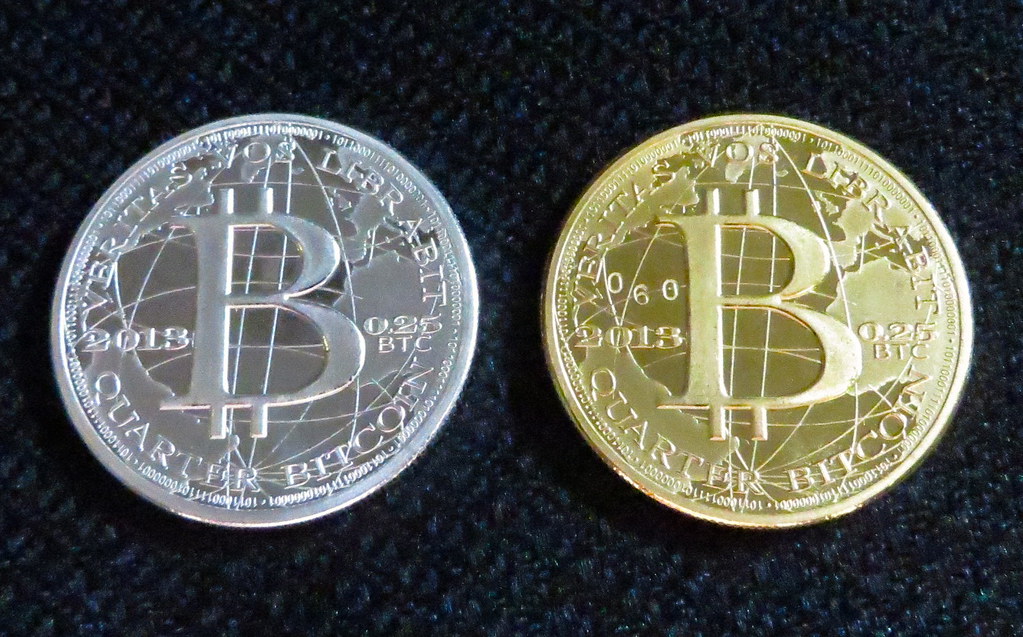Main Points:
- Significant Increase in Bitcoin ETF Holdings: Goldman Sachs boosted its ETF positions by up to 105% in Q4, demonstrating a decisive move towards digital assets.
- Multi-Faceted Investment Approach: The firm is strategically diversifying its portfolio through direct ETF holdings, options, and derivatives, reflecting a dynamic approach to digital asset management.
- Institutional Adoption and Market Impact: This expansion signals growing institutional acceptance of Bitcoin as a mainstream asset, potentially paving the way for further market transformation.
- New Tokenization and Blockchain Initiatives: Launching tokenized funds and blockchain ventures highlights Goldman Sachs’ commitment to integrating blockchain technology into traditional finance.
- Broader Market Trends and Future Prospects: The move is part of a larger trend among institutional investors embracing crypto, contributing to enhanced market maturity and financial innovation.
In recent times, Goldman Sachs has emerged as a pioneering force in the realm of digital asset investment by significantly expanding its Bitcoin ETF holdings during the fourth quarter. The firm’s strategic pivot towards digital assets not only underlines its belief in Bitcoin as a mainstream asset but also signals a broader shift within the financial sector. In this comprehensive article, we explore the intricacies of Goldman Sachs’ recent moves, analyze the multi-faceted investment strategies employed, and contextualize these developments within the broader market trends that are shaping the future of digital finance. Additionally, we delve into new tokenization initiatives and blockchain ventures that demonstrate the firm’s commitment to innovation, all while considering the latest regulatory and market developments as we move into 2025.
Significant Increase in Bitcoin ETF Holdings
During the fourth quarter of the previous year, Goldman Sachs reported a remarkable increase in its Bitcoin ETF holdings. The firm notably expanded its position in IBIT by 88% and in FBTC by 105% compared to earlier filings. Detailed in the Securities and Exchange Commission (SEC) documents, this expansion reflects a decisive strategic pivot from earlier skepticism toward embracing digital assets. As of November 2024, Goldman Sachs held over $460 million in BlackRock’s IBIT Bitcoin ETF alone, clearly underscoring its confidence in the long-term potential of Bitcoin.
This aggressive expansion is more than a short-term maneuver; it represents a fundamental shift in the institutional perspective toward digital currencies. The firm’s recalibrated asset allocation strategy indicates that major financial players are now increasingly comfortable integrating Bitcoin into their portfolios. This move not only signals a renewed belief in the stability and growth potential of digital assets but also sets the stage for further institutional adoption that could reshape market dynamics.

Multi-Faceted Investment Approach
Goldman Sachs’ strategy in digital asset investment is characterized by a sophisticated, multi-faceted approach. The firm is not solely increasing its direct ETF holdings; it is also enhancing its exposure through derivative instruments such as call options and put options. This dual-pronged strategy is designed to hedge against market risks while capitalizing on the volatility inherent in the cryptocurrency market.
By employing a combination of direct investments and derivative positions, Goldman Sachs can effectively manage risk and optimize returns, even amid unpredictable market conditions. This method illustrates a nuanced understanding of digital asset dynamics, where the interplay between market stability and volatility is carefully balanced. The firm’s willingness to integrate various financial instruments highlights its commitment to innovation and risk management, setting a precedent for other institutional investors aiming to navigate the complex landscape of digital assets.
Institutional Adoption and Market Impact
The substantial increase in Bitcoin ETF holdings by Goldman Sachs is emblematic of a broader trend in the financial industry. Institutional investors are increasingly recognizing Bitcoin not merely as a speculative asset but as an integral component of diversified portfolios. Goldman Sachs’ strategic moves serve as an important barometer for market sentiment; as more traditional financial institutions allocate significant capital to digital assets, the legitimacy and mainstream acceptance of cryptocurrencies are likely to accelerate.
This trend is not isolated. Other financial giants such as JPMorgan and Morgan Stanley are actively exploring digital asset investments, further reinforcing the notion that institutional adoption is on the rise. With this increased participation, the market is poised to experience enhanced stability and maturity. A more mature market, in turn, is expected to result in reduced volatility and the emergence of innovative financial products designed specifically for digital asset investment. Consequently, Goldman Sachs’ actions may well serve as a catalyst for further institutional engagement and market transformation.
New Tokenization and Blockchain Initiatives
Beyond the significant expansion of its Bitcoin ETF holdings, Goldman Sachs has embarked on new initiatives that center on tokenization and blockchain technology. In July 2024, the firm announced plans to launch three tokenized funds targeting both the United States and European markets. This strategic move was complemented by the launch of a blockchain venture in November 2024, which is aimed at supporting the tokenization of traditional financial instruments and optimizing the trading and settlement processes associated with these assets.
Goldman Sachs’ foray into blockchain is indicative of a broader strategic vision: to integrate advanced technological solutions into its core operations. By leveraging blockchain for tokenization, the firm seeks to streamline financial transactions and foster greater transparency, efficiency, and security in trading practices. This initiative not only enhances operational efficiency but also positions Goldman Sachs as a leader in the emerging intersection of traditional finance and cutting-edge digital technologies. The firm’s commitment to blockchain innovation signals a future where such technology becomes a fundamental pillar of modern financial systems, enabling a more interconnected and digitized economy.
Broader Market Trends and Future Prospects
Goldman Sachs’ strategic expansion into digital assets is part of a larger, global trend that is redefining the financial landscape. Recent developments indicate that institutional adoption of cryptocurrencies is gaining unprecedented momentum. A growing number of financial institutions are integrating crypto assets into their investment strategies, a trend further supported by emerging fintech companies and asset managers entering the space. This surge in interest validates the potential of digital assets as robust and viable components of diversified investment portfolios.
Regulatory frameworks are also evolving in response to this digital revolution. Agencies such as the SEC in the United States and various European regulators are working to provide clearer guidelines that promote responsible innovation in the crypto market. This evolving regulatory environment is expected to reduce uncertainties, enhance investor confidence, and foster a more stable market. Additionally, technological advancements in blockchain and related fields are opening new avenues for practical applications beyond digital currencies. From decentralized finance (DeFi) to digital identity verification, blockchain technology is poised to revolutionize various sectors by offering more efficient and secure systems.
Moreover, global competition in the digital asset arena is intensifying. Nations worldwide are recognizing the economic potential of blockchain technology and are developing national strategies to harness its benefits. Several European countries have introduced regulatory sandboxes to facilitate blockchain experimentation, while Asian governments are actively exploring the integration of central bank digital currencies (CBDCs) into their financial systems. These initiatives underscore a global trend in which governments, financial institutions, and technology companies are collaborating to build a more inclusive and efficient financial ecosystem. As the lines between traditional finance and digital innovation blur, the stage is set for a transformative era characterized by enhanced market efficiency, transparency, and inclusivity.
Looking forward, the future of digital asset investment appears exceedingly promising. Goldman Sachs’ aggressive strategy in expanding its Bitcoin ETF holdings and its simultaneous push into blockchain initiatives represent a microcosm of a much larger movement. As institutional investors continue to embrace digital assets, a gradual yet persistent shift toward more integrated and technologically advanced financial systems is anticipated. Both institutional and retail investors stand to benefit from a diversified market that blends the reliability of traditional asset classes with the growth potential of digital assets. Ultimately, the convergence of regulation, technological innovation, and market dynamics will play a pivotal role in shaping a resilient and forward-thinking global financial landscape.
Additional Perspectives on Recent Trends
Recent industry reports and market analyses underscore that the momentum in crypto adoption extends beyond ETF investments. There is a notable trend toward the integration of blockchain solutions across various financial sectors—including supply chain management, digital payments, and asset tokenization. The rapid growth of decentralized finance (DeFi) platforms has demonstrated blockchain’s capacity to disrupt traditional banking systems by providing more efficient, transparent, and accessible financial services.
Furthermore, major asset management firms are beginning to incorporate blockchain technology into their operational frameworks, aiming to reduce transaction costs and bolster security. This convergence of technology and finance is fostering an environment ripe for innovation. As more companies invest in blockchain infrastructure, we can expect a proliferation of new financial products that harness the stability of conventional finance alongside the dynamism of digital assets.
The global landscape for digital assets is also witnessing significant governmental interest. Recognizing the transformative potential of blockchain, countries are increasingly developing comprehensive strategies to promote digital innovation. For instance, several European nations have rolled out initiatives designed to support blockchain startups and foster digital financial services. Similarly, governments in Asia are actively researching and testing central bank digital currencies (CBDCs), a move that could fundamentally alter how money is managed and transferred across borders.
These developments reflect a broader paradigm shift in which traditional financial systems are gradually merging with digital technologies. As regulatory frameworks become more accommodating and technology continues to evolve at a rapid pace, the future promises a seamless integration of traditional and digital finance. This emerging ecosystem is poised to deliver enhanced efficiency, reduced costs, and improved transparency, ultimately benefiting all market participants.
In summary, Goldman Sachs’ recent expansion of its Bitcoin ETF holdings, combined with its pioneering initiatives in tokenization and blockchain technology, marks a significant milestone in the evolution of digital asset investment. The firm’s multi-faceted approach—encompassing direct ETF investments and sophisticated derivative strategies—demonstrates its commitment to mitigating risk while capitalizing on the growth potential of digital assets. Such strategic moves not only highlight the firm’s confidence in the long-term viability of cryptocurrencies but also set a powerful precedent for the broader financial sector.
As more traditional institutions follow Goldman Sachs’ lead, the mainstream acceptance of digital assets is expected to accelerate, driving further innovation and the development of new financial products. This transformative phase—characterized by strategic investments, regulatory evolution, and rapid technological progress—heralds a future in which digital and traditional finance coexist seamlessly. The integration of these two realms is set to pave the way for a more efficient, transparent, and resilient global financial system.


